Figures & data
Figure 1 Location of monthly phytoplankton and water quality sampling stations. BCL = Blue Cypress Lake; HBO = outlet of Lake Hell ′n Blazes; SGO = outlet of Sawgrass Lake; LWC = center of Lake Washington; LWO = outlet of Lake Winder; LPO = outlet of Lake Poinsett.
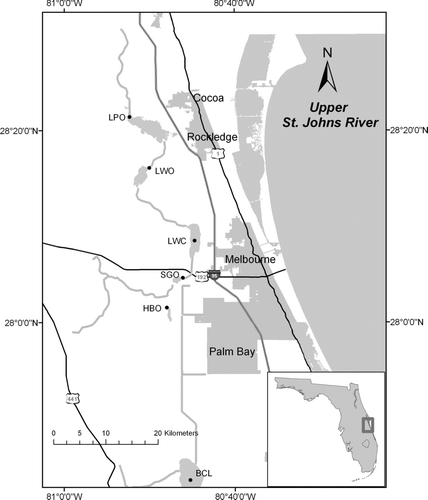
Table 1 Method of analysis of water quality samples. “SM” refers to Standard Methods for Analysis of Water and Wastewater (APHA 1998); “EPA” refers to Methods for the Chemical Analysis of Water and Wastes (USEPA 1983).
Figure 2 Average monthly biovolume in lakes of the Upper St. Johns River. Lakes arranged in order from upstream (BCL = Blue Cypress Lake) to downstream (LPO = Lake Poinsett).
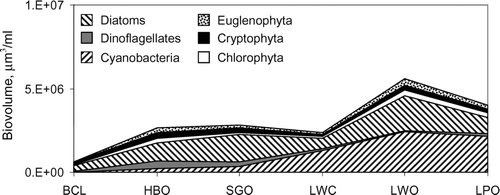
Table 2 Relative phytoplankton community composition in lakes of the Upper St. Johns River. Values represents an average of 30 months of biovolume data.
Figure 3 Relationship between total community average monthly biovolume and community diversity. Left axis refers to the number of genera that comprises 90% of the community biovolume (bars). Line (right axis) depicts total algal biovolume.
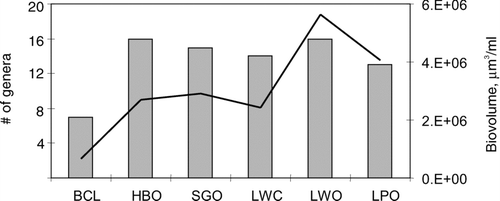
Figure 4 Seasonal variation in biovolume in lakes of the Upper St. Johns River. Data represent average of all six lakes. Discharge data represent mean monthly values from USGS gauging station at US Highway 192, for period of record January 2001 through December 2004.
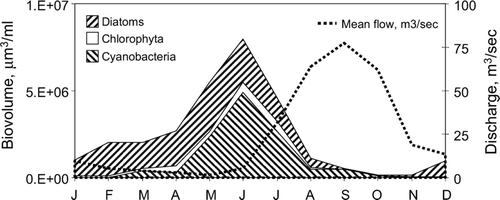
Table 3 Top 10 species of diatom, cyanobacteria, and green algae in the lakes of the Upper St. Johns River. Ranking based on total biovolume of all algal divisions.
Figure 5 Top five diatom genera in USJRB lakes. Bars represent the average monthly biovolume of 30 months of data, from March 2001 through November 2004. Note variable y-axis scaling.
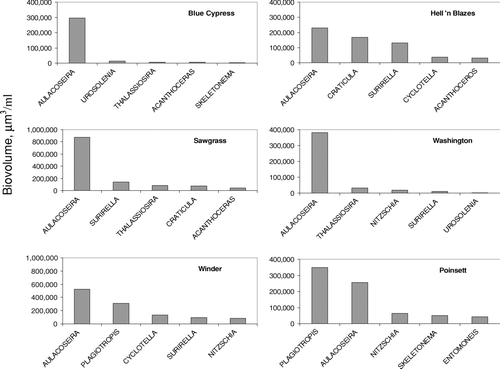
Figure 6 Top five cyanobacteria genera in USJRB lakes. Bars represent the average monthly biovolume of 30 months of data, from March 2001 through November 2004. Note variable y-axis scaling.
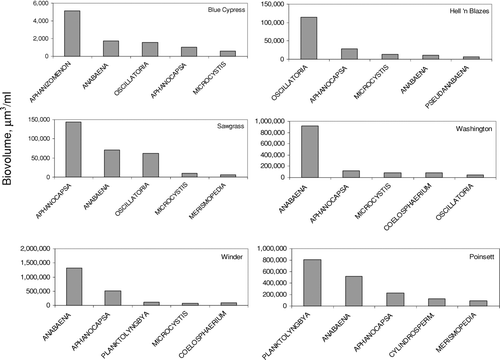
Figure 7 Top five green algal genera in USJRB lakes. Bars represent the average monthly biovolume of 30 months of data, from March 2001 through November 2004. Note variable y-axis scaling.
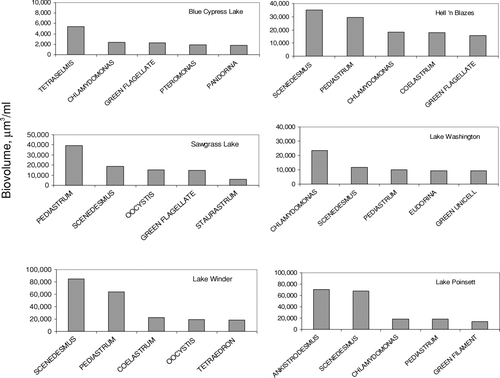
Table 4 Average value of selected physical and chemical characteristics of Upper St. Johns River lakes. Summary statistics cover period of record from March 2001 through November 2005. Values in parentheses represent one standard deviation. Values with same superscript letter are not significantly different at P = 0.05.
Table 5 Average value of selected water quality constituents for Upper St. Johns River lakes. Summary statistics cover period of record from March 2001 through November 2005. Values in parentheses represent one standard deviation. Values with same superscript letter are not significantly different at P = 0.05.
Table 6 Results of principal components analysis showing coefficients on each standardized water quality variable, as well as the percent of cumulative variance explained by the first three components.
Figure 8 Principal component analysis of Upper St. Johns River water quality data. Each point represents a single water quality sample. The ellipse in the lower left of the graph encircles samples collected primarily from Blue Cypress Lake.
